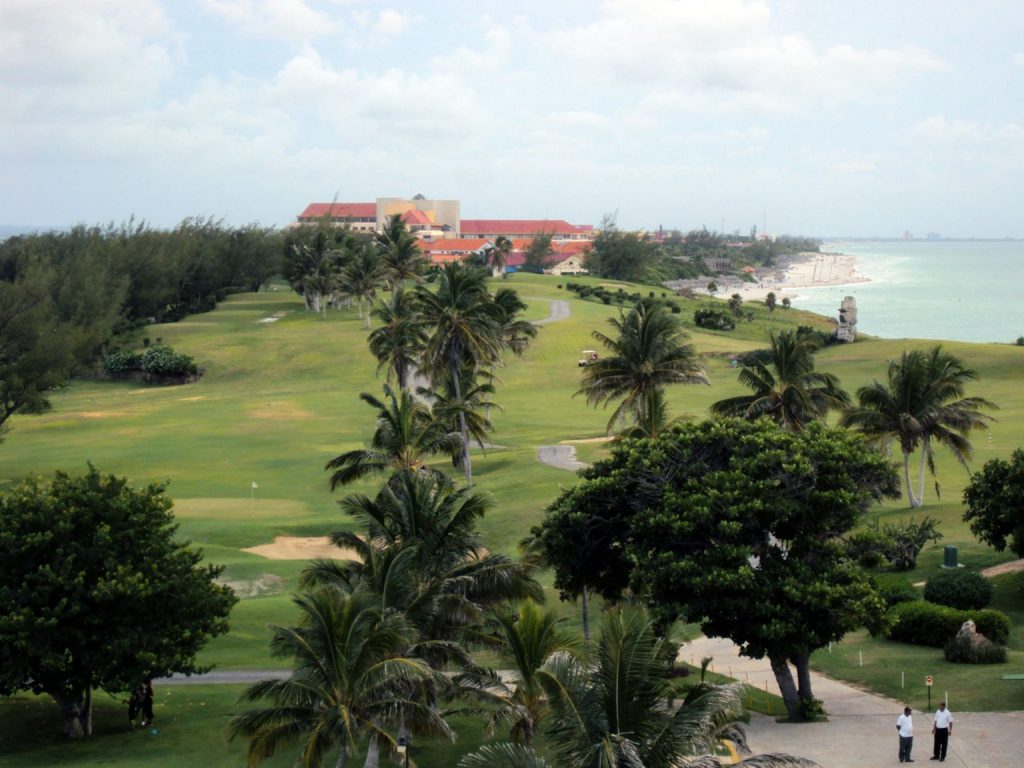Spanish teacher participated in Cuba Service Project
Speaking Spanish came in handy for USU Eastern associate professor Steve Nelson last summer when he joined a humanitarian mission to deliver much needed supplies to Cuba.
According to Nelson, in 1962 the U.S. government placed an embargo on Cuba. It is the longest trade lasting embargo in modern world history. Since the time the embargo began, the U.S. has not been able to sell anything or travel to Cuba because technically, it is against the law.

This archived article was written by: Shadayah Jones
Speaking Spanish came in handy for USU Eastern associate professor Steve Nelson last summer when he joined a humanitarian mission to deliver much needed supplies to Cuba.
According to Nelson, in 1962 the U.S. government placed an embargo on Cuba. It is the longest trade lasting embargo in modern world history. Since the time the embargo began, the U.S. has not been able to sell anything or travel to Cuba because technically, it is against the law.
The U.S. government does not enforce this law when it comes to humanitarian aid and every year an organization called “Pastors for Peace” organizes a service project to take supplies to Cuba.
“Because of the embargo on Cuba, the economy is suffering. They are in dire need of humanitarian aid to help provide supplies and medicine to the country. A lot of Cuba’s poverty is due to the fact that they cannot trade with the United States,” Nelson said. Pastors for Peace is an organization that collect humanitarian aid throughout the country and Canada and take it to Cuba once a year to help with the needs of the Cuban citizens. They collect anything from medical supplies to educational and mechanical equipment.
This trip is approximately two weeks and costs about $1,500. The Pastors for Peace caravan to Cuba starts in the North America, where they then travel to Mexico to fly to Cuba.
The caravan must do this because, due to the embargo, it is illegal for Americans to travel to Cuba from the U.S. without a license.
The trip to Cuba is the biggest caravan put on by the organization. The caravan has 14 different routes and they travel by brightly painted buses. When all of the buses that have been collecting aid finally meet, they are in McAllen, Texas.
All of the materials that have been collected are unloaded at a Lutheran Church in McAllen where they are manifested and packed.
Manifesting is a process where all of the items are labeled and recorded on a sheet of paper in English and Spanish. This is an important process because at the border, the caravan needs to provide a list of all they have with them.
The caravan spends two to three days in Texas manifesting and learning about Cuba. During this time, the leaders of Pastors for Peace are also preparing the volunteers for their trip to Cuba. Then the caravan crosses the border of the U.S. and Mexico.
Crossing the border takes an entire day because the caravan has to deal with the U.S. and Mexico officials. During this process, all of the supplies donated are inspected.
After crossing the Mexico border, they arrive in a town called Reynosa. The caravan always stays the night. They are not allowed to travel in Northern Mexico at night because of the danger.
They wake early the next morning and drive across Northern Mexico with a police escort to Tampico, Mexico.
Here the donations are loaded into containers, which are placed on a boat, and shipped to Cuba. While the supplies travel by boat, the volunteers fly to Cuba.
When the volunteers arrive in Cuba, a government office called the “Cuban Institute for Friendship with the People” take over. They plan about a week and a half of learning opportunities for the volunteers to learn about the Cuban culture and history. They consist of visits, tours, presentations, etc.
During this trip, Nelson was able to attend a graduation of medical students. He was also able to talk to survivors of Guantanamo Bay.
He learned about the production and processing of sugar cane. Nelson also learned about the tourist industry and spent many days on the beach which according to him was the best part.
“It was the Caribbean beach: white sand, warm water.” He also attended different festivals, museums, art exhibits and presentations.
At the end of the trip, the volunteers fly back to Mexico, stay in Tampico, and go back to Reynosa. At this time Nelson says “the volunteers march from their hotel to the border and declare that they have been to Cuba as an act of civil disobedience.” This is an act stating that they disagree with the law and the embargo on Cuba.
This group, Pastors for Peace, travel every summer to do this service project. Nelson says, “this was a really unique experience, I felt really safe in Cuba.
“You learn a ton about a neighbor that is 80 miles away that we know nothing about and it is really informative.
“You can relax; you don’t have to go to the presentations, you can just go to the beach. It is really a learning experience more than just a vacation.”
If anyone is interested in joining in on this service project to Cuba next summer, contact Steve Nelson at [email protected]. He hopes to take a group of students to Cuba with him next summer.




